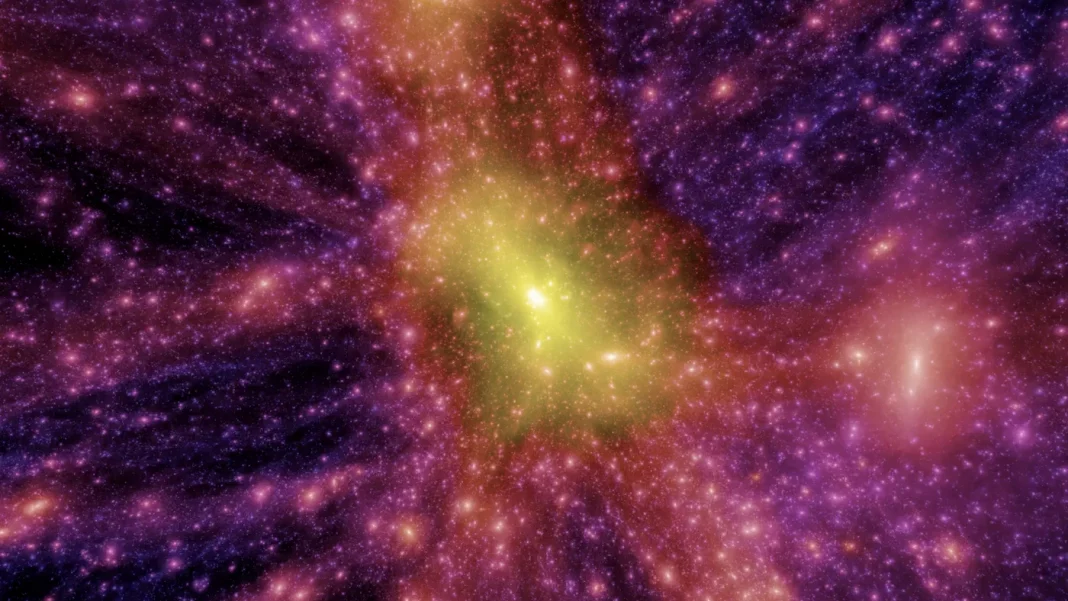The SIBELIUS-DARK simulation, from the Simulations Beyond the Local Universe (SIBELIUS) project, may be the largest and most accurate virtual representation of the evolution of the universe to date. It was produced by an international team of researchers led by the University of Helsinki, who used supercomputer simulations to recreate the entire evolution of the cosmos, from the Big Bang to the present.
To produce it, the researchers worked with physical equations to describe how dark matter and cosmic gas evolve over the lifetime of the universe. The result is a simulation that spans a distance of 600 million light-years from Earth, represented by more than 130 billion particles simulated with the processing work of thousands of computers, which worked for weeks to produce massive amounts of data.
Three academics from our Dep of Physics have helped produce the largest and most accurate computer simulation of our local patch of the Universe to date, which includes the 🌌
👀 Watch the video and read more 👉https://t.co/Vxr4MUavrCVideo credit: Dr Stuart McApline. pic.twitter.com/Y9SmibHwag
— Durham University (@durham_uni) February 10, 2022
Want to stay on top of the best tech news of the day? Access and subscribe to our new youtube channel, Kenyannews News. Every day a summary of the main news from the tech world for you!
By using advanced generative algorithms, the authors of the study were able to produce simulations conditioned to reproduce our specific area of the universe, including structures present in our galaxy that have been studied for some decades. In other words, structures such as the Perseus galactic cluster, the “Local Void”, among other well-known ones, were reproduced in the simulation.
At the center of it is what is perhaps the most important structure: the virtual versions of the Milky Way and our neighbor Andromeda. “It is immensely exciting to see familiar structures that we know exist around us emerging from a computer simulation,” said Professor Carlos Frenk of Durham University. Dr Matthieu Schaller, from Leiden University, highlighted the importance of the project for the “Cold Dark Matter” model.
It is a kind of “standard model” of cosmology that can explain properties of the heat left after the Big Bang to the spatial distribution observed in galaxies today. “These simulations show that the Cold Dark Matter Model can produce all the galaxies we see in our neighborhood,” he noted. “It’s a very important test for the model to pass.”
Generally, simulations of the cold dark matter universe present a part of the universe similar to that of the observable universe, but SIBELIUS-DARK brings a different proposal. “By simulating our universe as we see it, we are one step closer to understanding the nature of our cosmos,” explained Dr Stuart McAlpine, lead author of the study. “This project brings an important bridge between decades of theory and astronomical observations.”
The article with the results of the study was published in the journal Monthly Notices of the Royal Astronomical Society.
